Video Tutorial Complex Ions
Quick Notes Complex Ions
- A positively charged metal ion in water is surrounded by water molecules.
- The partially negative oxygen atom in a water molecule forms a co-ordinate (dative) bond with the positively charged metal ion.
- A species that forms a co-ordinate bond with a positive metal ion is called a ligand.
- The partially negative oxygen atom in a water molecule forms a co-ordinate (dative) bond with the positively charged metal ion.
- Only six water molecules can get close enough to a metal ion to form co-ordinate bonds, creating a complex ion with a co-ordination number of six and an octahedral shape.
- Co-ordination number refers to how many co-ordinate bonds there are in total to the metal ion.
- If there are only water ligands in a complex ion, the complex ion’s overall charge is the same as the metal ion in the complex, as water molecules have no overall charge.
Full Notes Complex Ions
When a positive metal ion (cation) is placed into water, water molecules ‘surround’ the metal ion and bond to it, creating an ‘aqua complex ion’. These complex ions can react with different negatively charged ions (anions). The species bonded to positive metal ions in complex ions are called ligands, and the type of bonds they form are called co-ordinate bonds.
Forming Aqua Complex Ions:
Water is a polar molecule. Due to oxygen’s high electronegativity, the oxygen in the molecule has a partial negative charge, so it’s attracted to the positive charge of a metal ion.
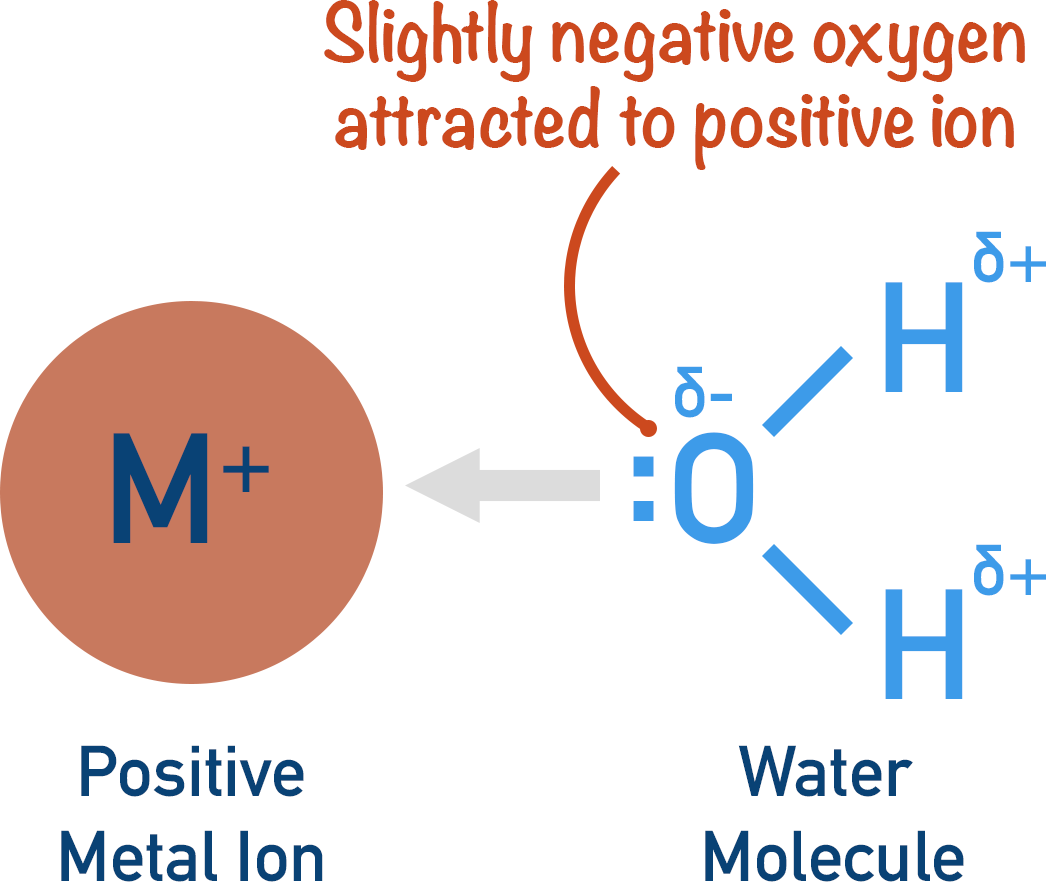
When the oxygen atom gets close enough to the metal ion, one of its lone pairs of electrons moves towards the metal ion and gets ‘shared’ between the oxygen and the metal ion. A covalent bond is formed between the metal ion and the oxygen atom. This covalent bond is unique though because both electrons in the bond come from the oxygen atom.
Usually in a covalent bond two atoms each share one electron to make a bonded pair of electrons.
As both electrons have come from one atom, the covalent bond is called a co-ordinate (or dative) bond. A species that donates electrons to form a co-ordinate bond with a metal ion is called a ligand.
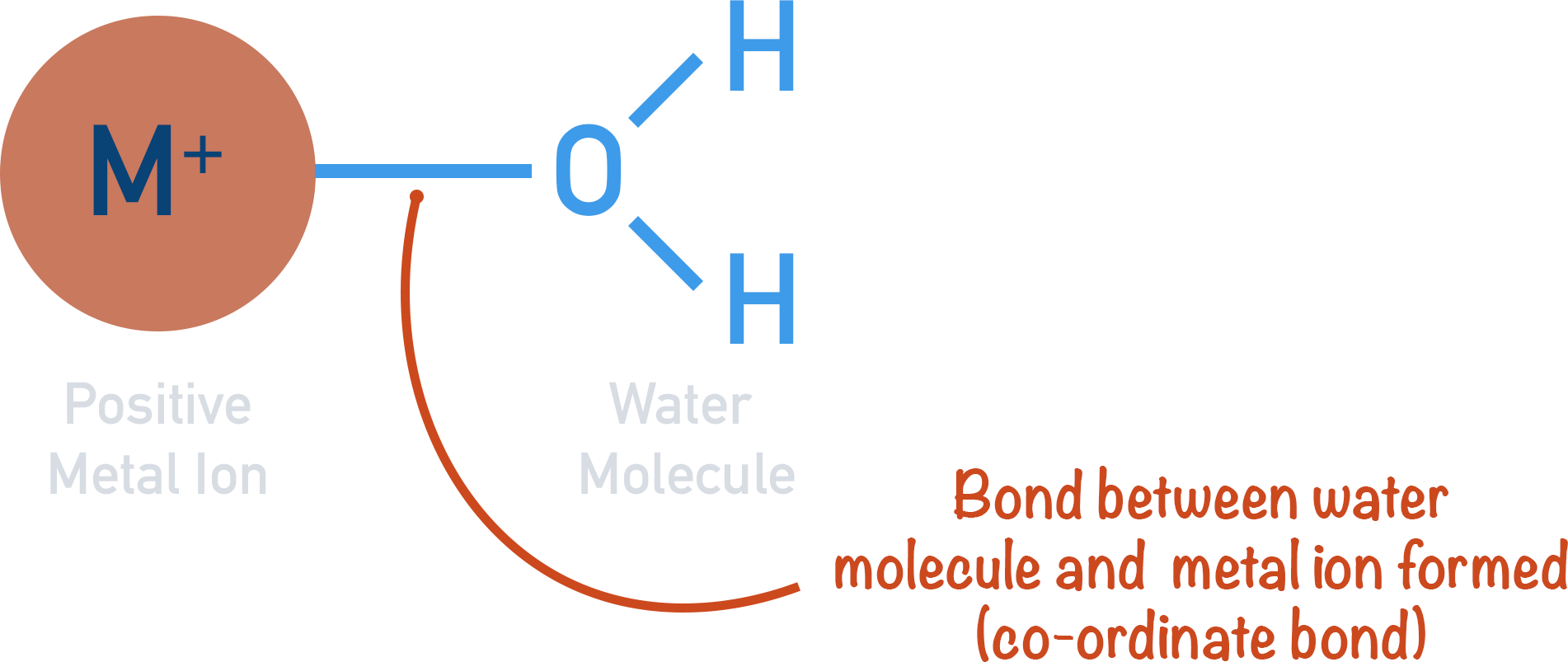
In solution there are lots of water molecules compared to metal ions. This means more than one water molecule is attracted to the metal ion and wants to form a co-ordinate bond.
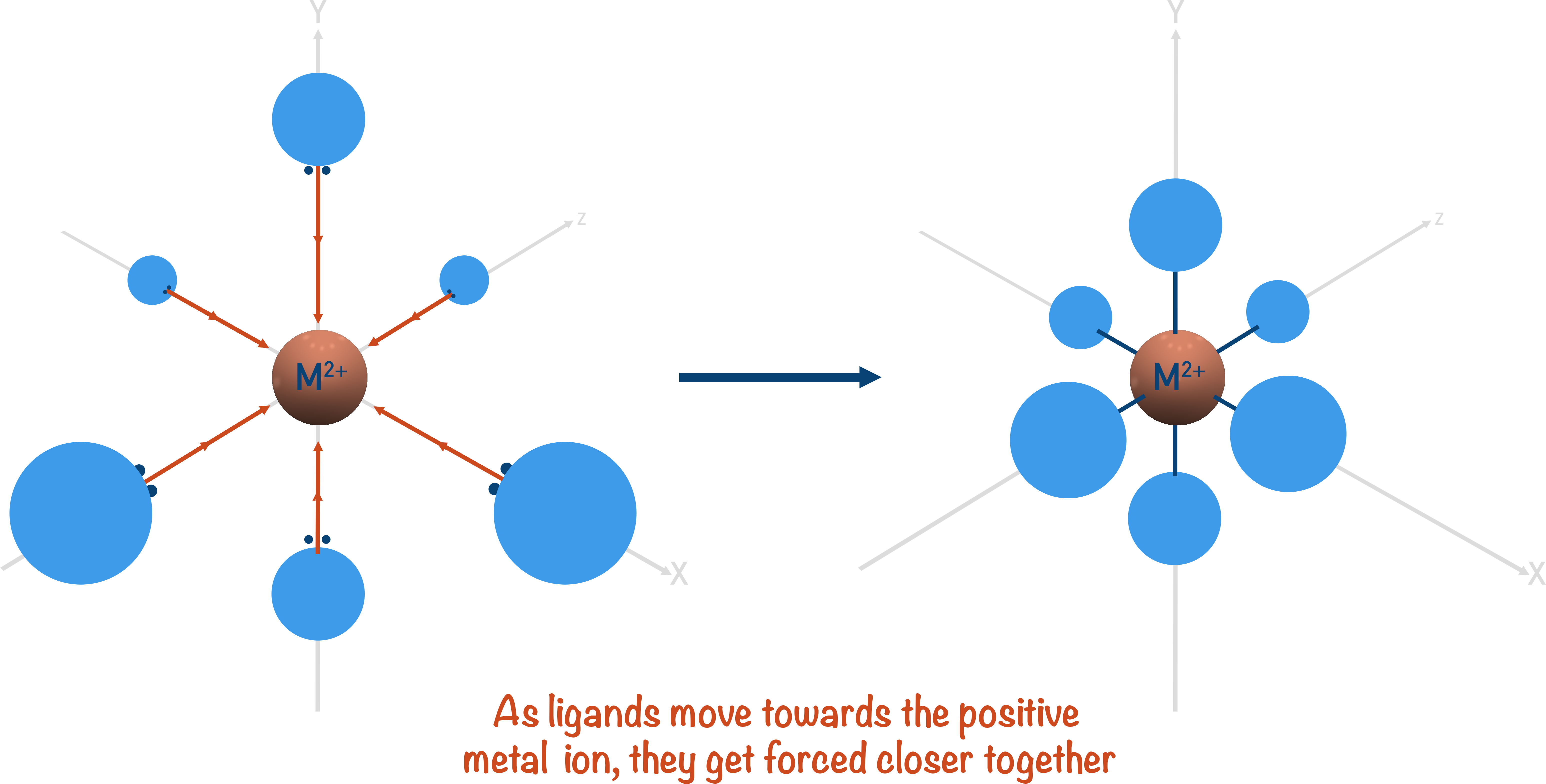
Water molecules are quite large so only six can get close enough to the metal ion to form a co-ordinate bond.
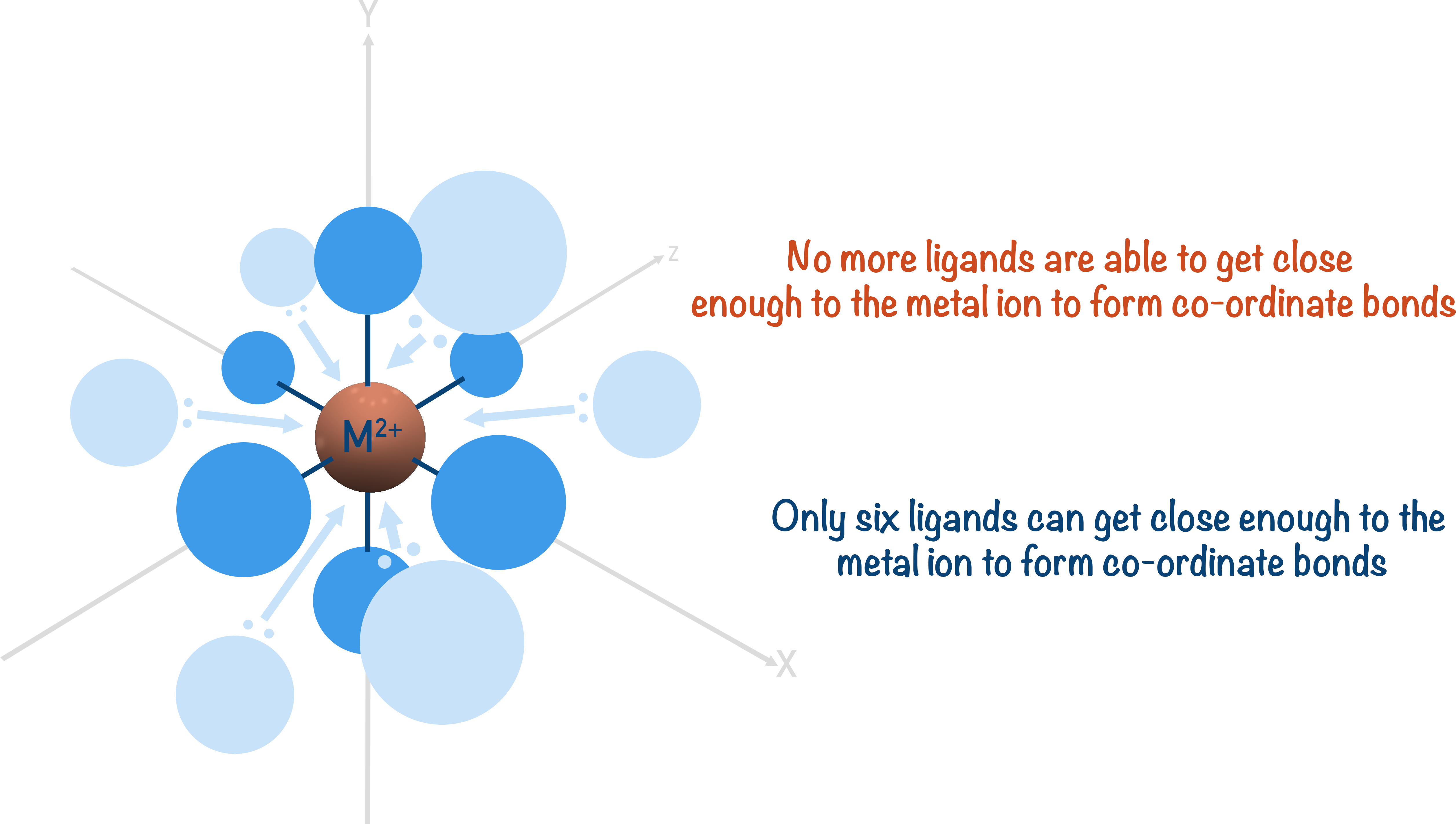
Anymore water molecules simply get blocked by the water molecules already bonded to the metal ion. This means a complex ion M(H2O)6(aq) is formed with an octahedral arrangement of ligands around the ion.
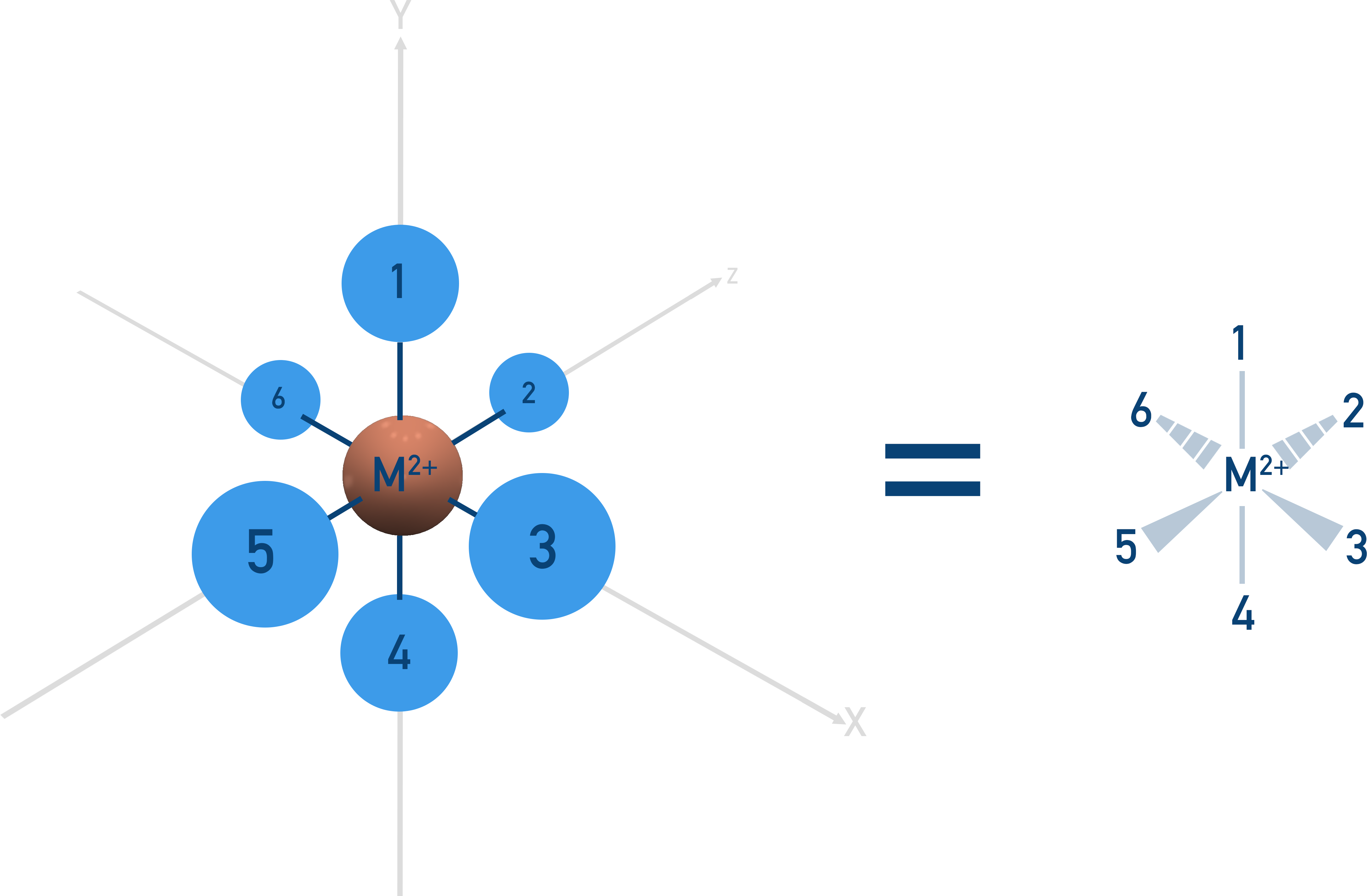
M represents the metal ion. The metal ion will always have a positive charge, and because water is a neutral molecule with no overall charge, the complex ion has a charge that is the same as the metal ion.
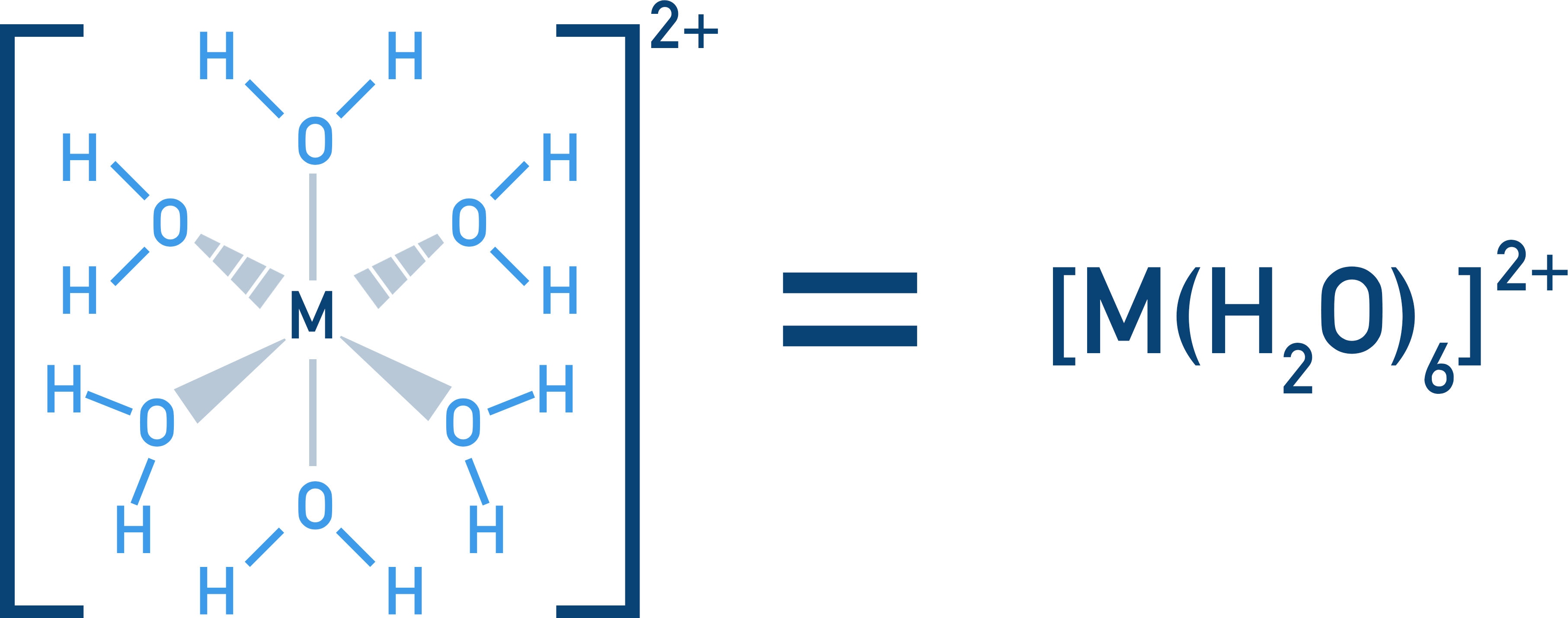
For example, if the metal ion has a charge of 2+, the complex ion formed would be [M(H2O)6]2+.
Monodentate and Bidentate ligands:
Not all ligands form only one co-ordinate bond to a metal ion.
Water, ammonia and chloride form one co-ordinate bond and are called monodentate ligands.
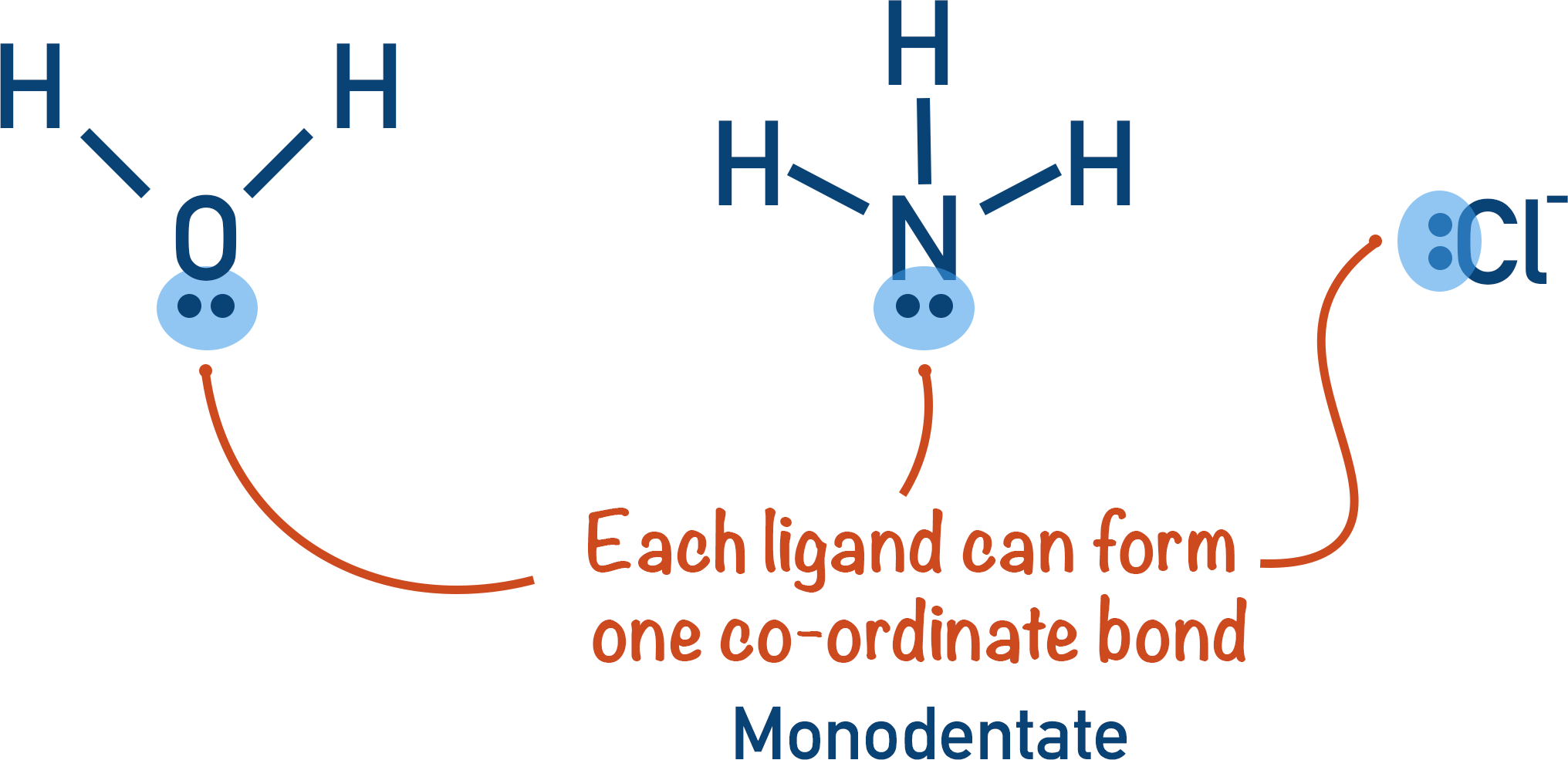
Ligands that can form two co-ordinate bonds with a metal ion are called bidentate ligands. Ethanedioate ions can form two co-ordinate bonds, so three ethanedioate ions can surround a metal ion.

Important note – even though there are three ligands now, the number of co-ordinate bonds around the metal ion is still six. The co-ordination number is still six, it has not changed. The charge of the complex is now negative as the ethanedioate ligands each have a 2- charge.
For more of a headache, there are polydentate ligands that can form even more co-ordinate bonds with a metal ion.
We’ve launched our new site! 🎉
Course-specific notes with built-in search!
AP • A-Level (AQA • CIE • Edexcel • OCR) • IB • NCERT 11 + 12
over 750+ new pages and 3,500 images.
Visit the new homepage
